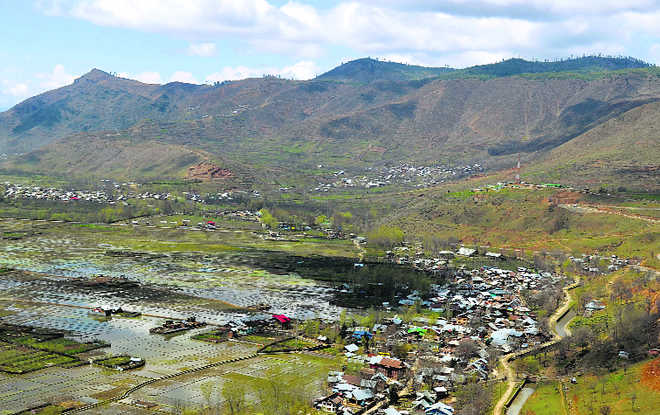20 lakh willow trees to be axed in Kashmir
Srinagar, october 1
More than 20 lakh willow trees — once a key source of wood for cricket bats, fruit boxes and fires — will be cut down around Kashmir's Wular Lake, as part of efforts to revive the region's largest flood basin.
In a 2007 study, conservation group Wetlands International said the lake originally covered an area of nearly 218 sq km, including 58 sq km of marshland. It shrank in size by 45 per cent over a century - from about 158 sq km in 1911 to 87 sq km in 2007 -- as it was drained for agriculture and willow plantations.
The Jammu and Kashmir Government now plans to remove some 20 lakh willows and 2 crore cubic metres of silt from the lake in a conservation programme starting next month, which it says will also boost eco-tourism.
"The willow plantations act as a barrier to the silt-laden waters of the Jhelum, forcing it to discharge its sediment load into the lake, thereby reducing its water-holding capacity," said Samiullah Bhat of the University of Kashmir's Department of Environmental Science, who participated in an environmental impact assessment of willow tree removal at Wular.
Irfan Rasool Wani, coordinator of the Wular Conservation and Management Authority (WUCMA), said remote sensing imagery showed willow plantations extend across an area of about 27 sq km. The trees, combined with severe siltation where they grow, have reduced the lake's capacity by 20 per cent, he said. Taking away over 2 crore cubic metres of silt would increase the depth of lake by 3.5 metres, he noted.
Experts have identified some potential "short-term losses" from the planned conservation measures - which are due to cost over Rs 400 crore — such as algae blooms caused by the release of soil nutrients into the water after the trees are felled. But the benefits should outweigh any potential negative impacts, they say. "The overall implication would be positive, as there would be recovery of wetland resources, such as fish and aquatic vegetation in the medium to long term, and generation of labour (for willow removal) in the shorter run," said Shakil Romshoo, head of the University of Kashmir's Department of Earth Sciences.
He and Akhtar Malik, a botanist at the same university, said the operation would not affect cricket bat manufacturers, as nowadays they source wood from other parts of Kashmir. Fruit growers, meanwhile, mostly prefer cardboard packaging, which has eased demand for willow wood in Kashmir, where apple and other fruit are grown on a large scale, Malik added.
Romshoo said cutting down older willow trees would not make much difference to the area's ability to absorb carbon. "Several recent research studies indicate that the net carbon sequestration rates in trees decline with maturity," he said. Most of Wular's willows are "very mature", he added.
Bhat said a decrease in shade once the trees have gone could lead to increased summer water temperatures and may affect disease resistance in fish. Deforested areas will need to be monitored as invasive plant species are likely to take advantage of the nutrient flushes and disturbances created by willow removal, he added. Meanwhile, local people are happy about the plan to revitalise the lake, which provides their livelihoods.
Thomson Reuters Foundation
Mother of all lakes
Overlooked by the Himalayas, Wular, one of Asia's biggest freshwater lakes, sits 34 km northwest of Srinagar. Known for its deep, pristine waters, the lake has suffered extensive degradation in recent decades.
16 km long; 9.6 km wide; 27 sq km the area of willow plantations
Lake’s area : 1911: 158 sq km; 2007: 87 sq km
32,000 Families dependent on lake
Why willow?
Willow planting began in Wular in 1924, mainly to provide firewood, and the plantation area was brought under Kashmir's Forest Department in the 1980s. In the 1980s and 1990s, the region's agriculture arm planted vast areas with willow as demand soared for wood to make cricket bats and fruit boxes. But in recent years, experts have traced problems linked to heavy siltation — including less water in the lake and declining fish stocks — to the presence of the willow trees.









